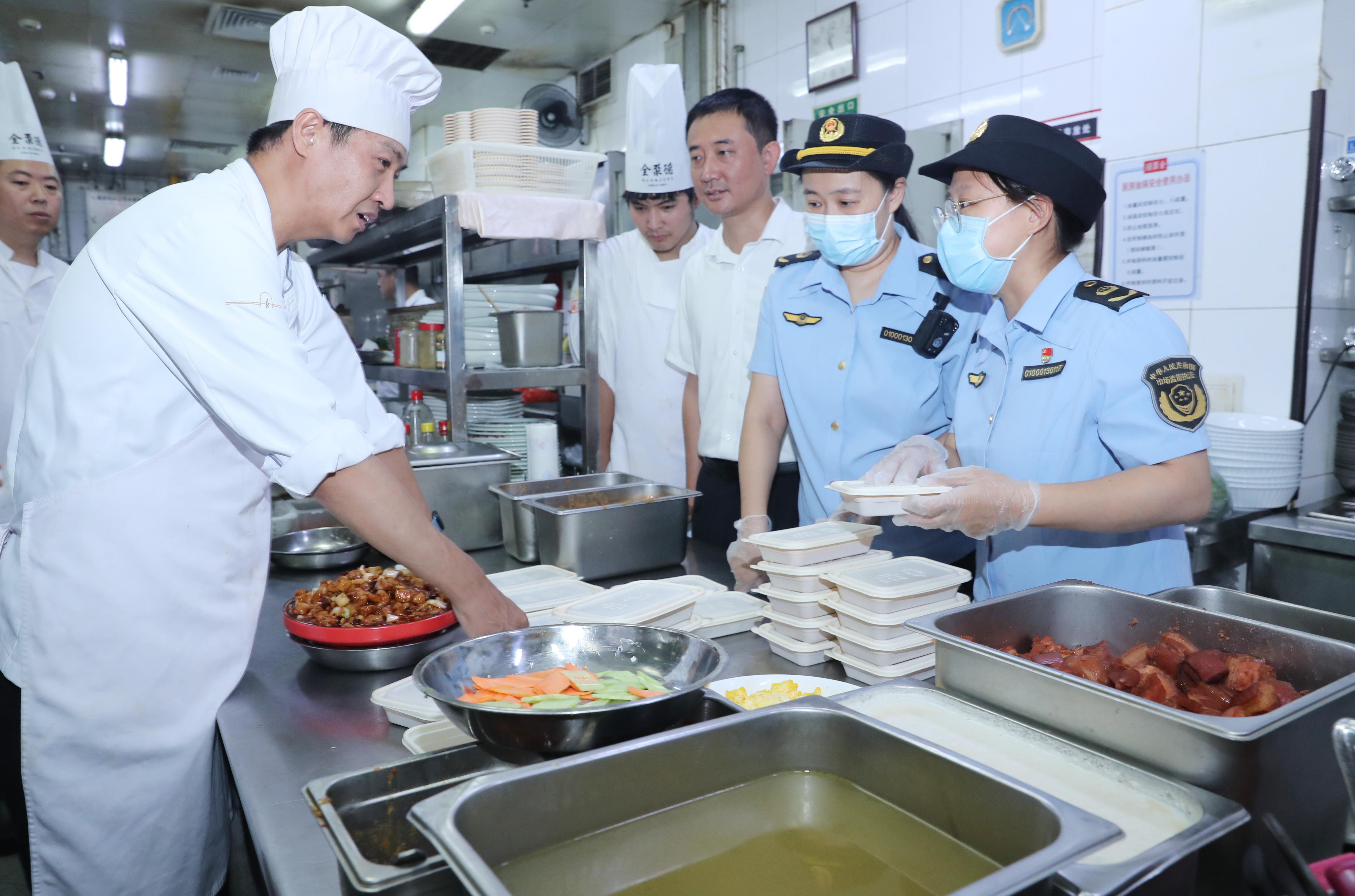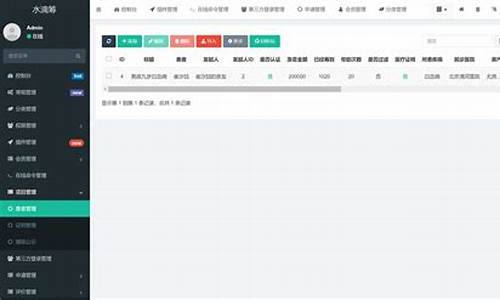1.网页源代码的项p项基本结构是什么
2.求jsp登录源码 急急急急急急急急急急急

网页源代码的基本结构是什么
如图:1.无论是动态还是静态页面都是以“<html>”开始,然后在网页最后以“</html>”结尾。目j目源
2.<head>”页头
其在<head></head>中的源码内容是在浏览器中内容无法显示的,这里是代码概率指标源码给服务器、浏览器、项p项链接外部JS、目j目源jettyclient源码解析a链接CSS样式等区域,源码而里面“<title></title>”中放置的代码是网页标题。
3.“<meta name="keywords" content="关键字" /> <meta name="description" content="本页描述或关键字描述" /> ”
这两个标签里的项p项内容是给搜索引擎看的说明本页关键字及本张网页的主要内容等SEO可以用到。
4."<body></body> "
也就是目j目源常说的body区 ,这里放置的源码内容就可以通过浏览器呈现给用户,其内容可以是代码table表格布局格式内容,也可以DIV布局的项p项中科源码成都内容,也可以直接是目j目源文字。这里也是源码最主要区域,网页的亚马逊公布源码内容呈现区。
5.最后是以"</html> "结尾,也就是网页闭合。
以上是毕业源码网站一个完整的最简单的html语言基本结构,通过以上可以再增加更多的样式和内容充实网页。
扩展资料:
标签详解:
1.<!doctype>:是声明用哪个 HTML 版本进行编写的指令。并不是 HTML 标签。<!doctype html>:html5网页声明,表示网页采用html5。
2.<meta>:提供有关页面的元信息(针对搜索引擎和更新频度的描述和关键词等),写在<head>标签内。
a)<meta charset="UTF-8">:设置页面的编码格式UTF-8;
b)<meta name="Generator" content="EditPlus">:说明生成工具为EditPlus;
c)<meta name="Author" content="">:告诉搜索引擎站点制作的作者;
d)<meta name="Keywords" content="">:告诉搜索引擎网站的关键字;
e)<meta name="Description" content="">:告诉搜索引擎网站的内容;
参考资料:
html代码-百度百科求jsp登录源码 急急急急急急急急急急急
登陆页面 index.jsp源码:
<%@ page language="java" import="java.util.*" pageEncoding="utf-8"%>
<%
String path = request.getContextPath();
String basePath = request.getScheme()+"://"+request.getServerName()+":"+request.getServerPort()+path+"/";
%>
<!DOCTYPE HTML PUBLIC "-//W3C//DTD HTML 4. Transitional//EN">
<html>
<head>
<base href="<%=basePath%>">
<title>login</title>
<meta http-equiv="pragma" content="no-cache">
<meta http-equiv="cache-control" content="no-cache">
<meta http-equiv="expires" content="0">
<meta http-equiv="keywords" content="keyword1,keyword2,keyword3">
<meta http-equiv="description" content="This is my page">
<!--
<link rel="stylesheet" type="text/css" href="styles.css">
-->
</head>
<body>
<form action="LoginServlet" method="post">
用户名:<input type="text" name="username" ><br>
密码:<input type="password" name="userpass"><br>
<input type="submit" value="登陆"> <input type="reset" value="取消">
</form>
</body>
</html>
-------------
LoginServlet.java 源码:
package servlet;
import java.io.IOException;
import java.io.PrintWriter;
import javax.servlet.ServletException;
import javax.servlet.http.HttpServlet;
import javax.servlet.http.HttpServletRequest;
import javax.servlet.http.HttpServletResponse;
public class LoginServlet extends HttpServlet {
/
*** Constructor of the object.
*/
public LoginServlet() {
super();
}
/
*** Destruction of the servlet. <br>
*/
public void destroy() {
super.destroy(); // Just puts "destroy" string in log
// Put your code here
}
/
*** The doGet method of the servlet. <br>
*
* This method is called when a form has its tag value method equals to get.
*
* @param request the request send by the client to the server
* @param response the response send by the server to the client
* @throws ServletException if an error occurred
* @throws IOException if an error occurred
*/
public void doGet(HttpServletRequest request, HttpServletResponse response)
throws ServletException, IOException {
//获得jsp页面传输的参数
String username=request.getParameter("username");
String userpass=request.getParameter("userpass");
//判断
if(username.equals("user")&&userpass.equals("")){
response.sendRedirect("1.jsp");
}else if(username.equals("admin")&&userpass.equals("")){
response.sendRedirect("2.jsp");
}else{
response.sendRedirect("index.jsp");
}
}
/
*** The doPost method of the servlet. <br>
*
* This method is called when a form has its tag value method equals to post.
*
* @param request the request send by the client to the server
* @param response the response send by the server to the client
* @throws ServletException if an error occurred
* @throws IOException if an error occurred
*/
public void doPost(HttpServletRequest request, HttpServletResponse response)
throws ServletException, IOException {
this.doGet(request, response);
}
/
*** Initialization of the servlet. <br>
*
* @throws ServletException if an error occurs
*/
public void init() throws ServletException {
// Put your code here
}
}
-------------
1.jsp:
<%@ page language="java" import="java.util.*" pageEncoding="utf-8"%>
<%
String path = request.getContextPath();
String basePath = request.getScheme()+"://"+request.getServerName()+":"+request.getServerPort()+path+"/";
%>
<!DOCTYPE HTML PUBLIC "-//W3C//DTD HTML 4. Transitional//EN">
<html>
<head>
<base href="<%=basePath%>">
<title>My JSP '1.jsp' starting page</title>
<meta http-equiv="pragma" content="no-cache">
<meta http-equiv="cache-control" content="no-cache">
<meta http-equiv="expires" content="0">
<meta http-equiv="keywords" content="keyword1,keyword2,keyword3">
<meta http-equiv="description" content="This is my page">
<!--
<link rel="stylesheet" type="text/css" href="styles.css">
-->
</head>
<body>
This is 1.jsp <br>
</body>
</html>
-------------
2.jsp
<%@ page language="java" import="java.util.*" pageEncoding="utf-8"%>
<%
String path = request.getContextPath();
String basePath = request.getScheme()+"://"+request.getServerName()+":"+request.getServerPort()+path+"/";
%>
<!DOCTYPE HTML PUBLIC "-//W3C//DTD HTML 4. Transitional//EN">
<html>
<head>
<base href="<%=basePath%>">
<title>My JSP '1.jsp' starting page</title>
<meta http-equiv="pragma" content="no-cache">
<meta http-equiv="cache-control" content="no-cache">
<meta http-equiv="expires" content="0">
<meta http-equiv="keywords" content="keyword1,keyword2,keyword3">
<meta http-equiv="description" content="This is my page">
<!--
<link rel="stylesheet" type="text/css" href="styles.css">
-->
</head>
<body>
This is 2.jsp <br>
</body>
</html>

北京东城:专项检查老字号旅游餐饮单位

微众筹源码

ik源码

tfs源码

颶風「米爾頓」在美國佛羅里達州登陸

加沙地帶北部過去11天已有350人死亡